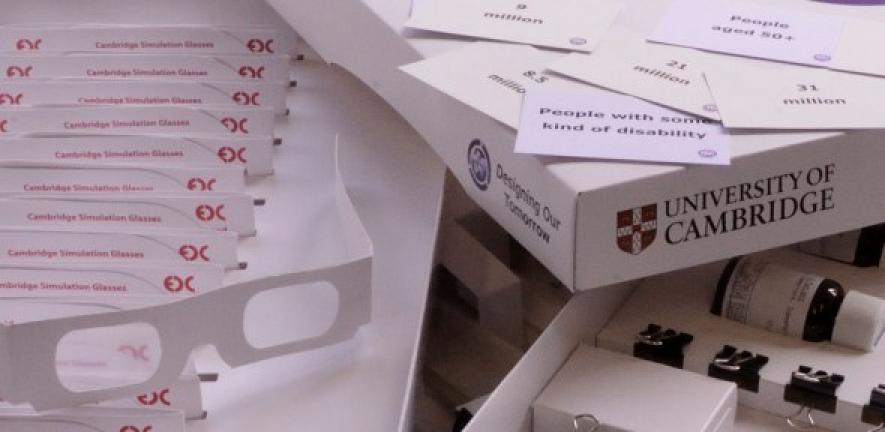
New resources designed to inspire the next generation of engineers by bringing authentic engineering challenges into the classroom have been launched today by the University of Cambridge.
New resources designed to inspire the next generation of engineers by bringing authentic engineering challenges into the classroom have been launched today by the University of Cambridge.
These workshops create a different atmosphere for learning, encouraging teamwork, innovation, and thinking about problems in a multi-dimensional way.
Heba Bevan, PhD Researcher in Low-power Wireless Sensor Networks, University of Cambridge Centre for Smart Infrastructure and Construction,
Designing our Tomorrow (DOT) is a joint project of the Department of Engineering and the Faculty of Education at the University of Cambridge.
Working in partnership with leading engineering companies and local schools, DOT has developed a distinctive teaching approach and a unique set of resources, ‘DOT in a Box’, for teachers to use in Key Stage 3 Design and Technology classes.
The three boxes being launched today are: Inclusive Design, Sensor Circuits and Picture Holders.
Each box includes a complete set of teaching resources, which would normally cover 12 D & T lessons.
“Inclusive Design” sets the challenge of designing more inclusive cutlery. The BOX includes a set of gloves and glasses that mimic the effects of human aging - the gloves restrict dexterity in a similar way to arthritis; while the glasses mimic the way vision declines from the age of 47.
Immersion in these and other creative/analytical tools contained in the BOX become the starting point to authentic engineering design challenges.
To help ensure that the case studies and challenges are authentic, leading engineering companies helped to develop the teaching resources:
- Cambridge Design Partnership contributed real-world industry case studies to inspire the students, including the design of Dulux PaintPod, a self-cleaning powered painter; and the Waterpebble, a small device with complex electronics to measure water usage in the shower. “We enjoyed the opportunity to demonstrate how interesting product development and engineering work can be, and share this in the classroom,” a spokesman said.
- Heba Bevan, PhD Researcher in Low-power Wireless Sensor Networks at the University of Cambridge’s Centre for Smart Infrastructure and Construction, said: “Engaging with students in a creative and relevant way at the age of 13 and 14 is critically important to develop analytical skills and a lifelong love of problem solving. These workshops create a different atmosphere for learning, encouraging teamwork, innovation, and thinking about problems in a multi-dimensional way rather than in a linear input-output manner. I believe that widespread implementation of DOT will lead to an significant increase in the number of students that pursue careers in science and engineering.”
BT, Marshalls and Chesapeake also supported the development of DOT in a Box.
The project has been piloted in a range of schools, including a number from Cambridgeshire to make sure that the resources work for teachers and pupils.
The most recent pilot was funded by the Royal Academy of Engineering through its Ingenious grant scheme.
Ian Hosking, Senior Research Associate at the University of Cambridge’s Engineering Design Centre, said: "Everything is designed. It is how we shape the world around us. Designing Our Tomorrow is about equipping students to design their futures and in particular address the global challenges of population ageing and environmental sustainability."
Bill Nichol, Lecturer in Design Education at the University of Cambridge’s Faculty of Education, said “Although 71% of 13 and 14 year olds interviewed for the project said that engineering was ‘cool’, less than half felt challenged by their lessons and only 38% said they were considering a career in design and technology.
“By developing and delivering inspirational resources for teaching Design & Technology at Secondary level, DOT hopes that all Key Stage 3 students will enjoy challenging lessons and be inspired to consider design as a real and rewarding career path.”
The text in this work is licensed under a Creative Commons Licence. If you use this content on your site please link back to this page. For image rights, please see the credits associated with each individual image.





